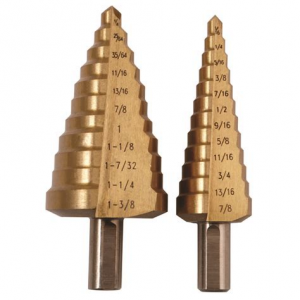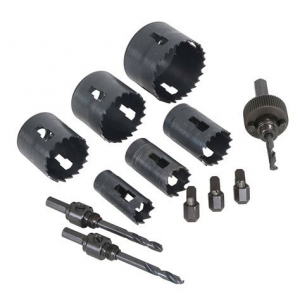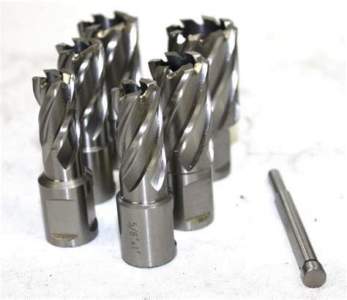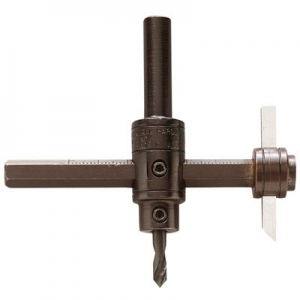- Joined
- Jul 22, 2019
- Messages
- 33
I have just gone through some suffering trying to drill some holes between 3/4 inch and 1.5 inch diameter in 1/4 inch steel plate. In hindsight, I should have used thinner stock, as I did not need much strength. My drill press is not happy drilling holes around 1 inch diameter, so I had to gradually increase the hole size with my 1/2 inch shank drill bits. Even a 1 inch hole took a lot of time. Not sure what my lowest RPM is on my drill press, maybe 200 rpm. My mill-drill will go down to about 100 rpm. Since I did not have any bits over one inch, I grabbed my cheap hole drill set, but it took forever just to get halfway through the plate, so it turned into a fiasco. The accuracy of the hole diameter was not critical in this case. I don't drill big holes very often, but I need a realistic way to drill holes over 1 inch diameter.
What should I have done? Not sure that I want to drop $150 for a decent set of hole saws, but maybe that is the right answer. One review said that a $60 set would not go through 1/4 inch steel more than once. Are hole saws even a good idea in steel? I notice that they use "annular cutters" with magnetic drill presses. Could I use annular cutters in my mill-drill? Annular cutters are fairly expensive, I note. I don't have a boring head, but my understanding is that they don't make holes, they make them bigger, so that would not have helped much, I would still have had to drill the large hole before I could use the boring head. Is there an alternative that I am missing?
Glad that you have a beginner forum so that I can ask beginner questions. ;-)
What should I have done? Not sure that I want to drop $150 for a decent set of hole saws, but maybe that is the right answer. One review said that a $60 set would not go through 1/4 inch steel more than once. Are hole saws even a good idea in steel? I notice that they use "annular cutters" with magnetic drill presses. Could I use annular cutters in my mill-drill? Annular cutters are fairly expensive, I note. I don't have a boring head, but my understanding is that they don't make holes, they make them bigger, so that would not have helped much, I would still have had to drill the large hole before I could use the boring head. Is there an alternative that I am missing?
Glad that you have a beginner forum so that I can ask beginner questions. ;-)




